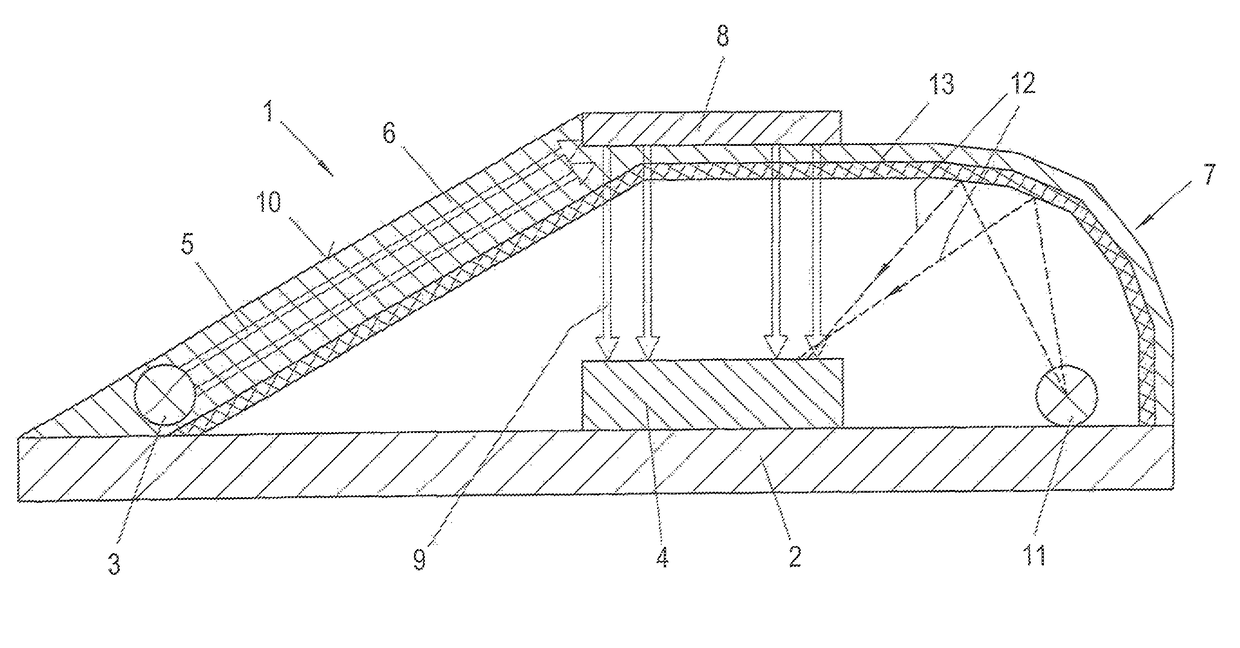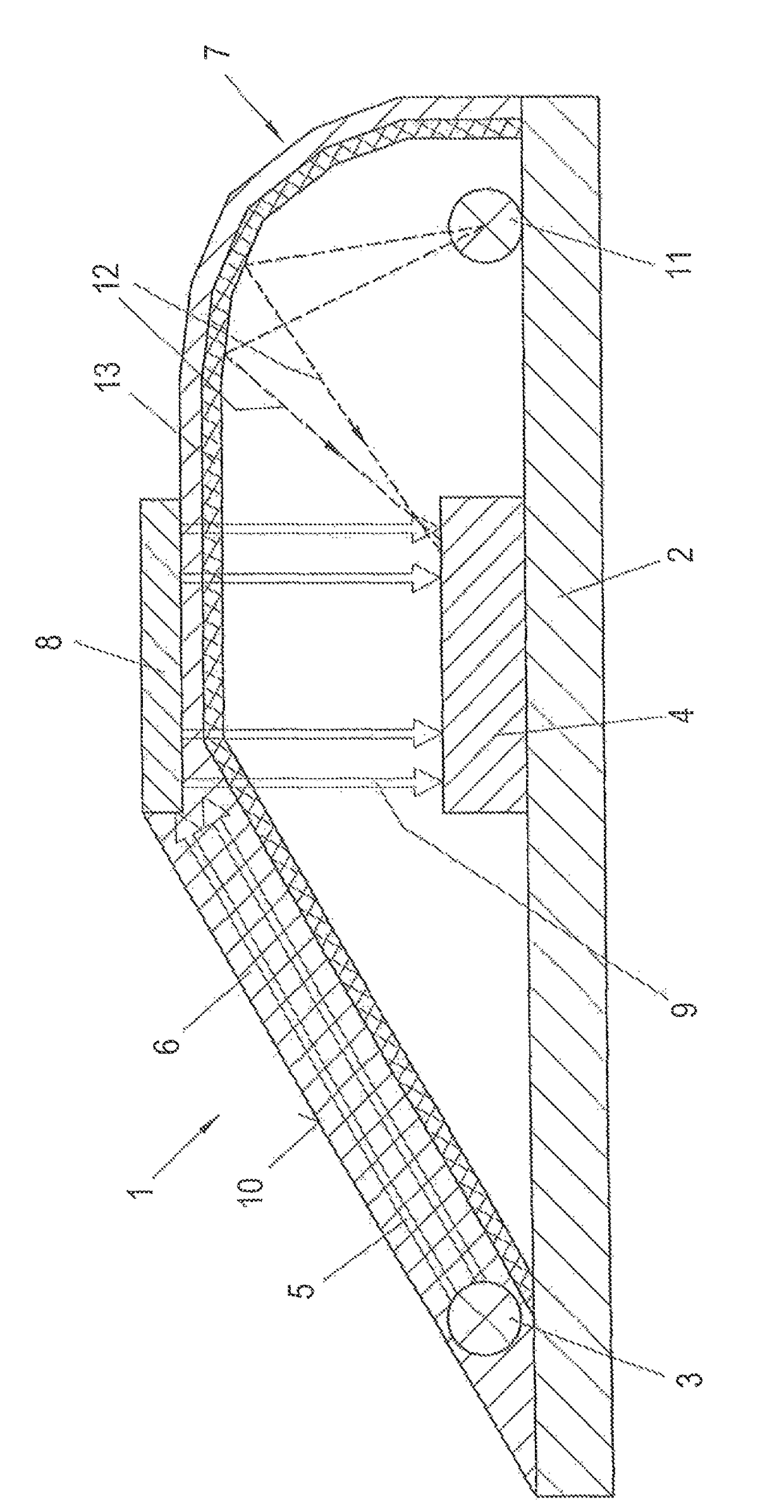Optochemical sensor
a technology of optochemical sensors and sensors, applied in the field of optochemical sensors, can solve problems such as measuring accuracy, and achieve the effects of reducing the structural height of the overall device, enhancing the measuring accuracy of the system, and reducing the structural height of the optochemical sensor
- Summary
- Abstract
- Description
- Claims
- Application Information
AI Technical Summary
Benefits of technology
Problems solved by technology
Method used
Image
Examples
Embodiment Construction
[0027]In FIG. 1, an optochemical sensor is denoted by 1, in which an excitation light source 3 and a detector 4 are fixed to a base plate 2. Light from the excitation light source 3, which is schematically indicated by 5, is radiated to a measuring element 8 through a portion 6 of a hood 7, which portion is designed as a light guide. The measuring element 8, which, in this case, is comprised of fluorophore dissolved or dispersed in a polymer base material, is, in particular, cross-linked with a surface roughened in the region of the measuring element 8, of the hood 7.
[0028]The excitation light source 5 excites the molecules of the fluorophore contained in the measuring element to emit fluorescence light, which fluorescence light contacts the molecules of a sample to be assayed and is optionally extinguished by said molecules. Non-extinguished light is reflected on the detector 4, and from measuring the intensity of the reflected radiation 9, which may optionally even be increased, t...
PUM
| Property | Measurement | Unit |
|---|---|---|
| thickness | aaaaa | aaaaa |
| fluorescence | aaaaa | aaaaa |
| pH | aaaaa | aaaaa |
Abstract
Description
Claims
Application Information
 Login to View More
Login to View More - R&D
- Intellectual Property
- Life Sciences
- Materials
- Tech Scout
- Unparalleled Data Quality
- Higher Quality Content
- 60% Fewer Hallucinations
Browse by: Latest US Patents, China's latest patents, Technical Efficacy Thesaurus, Application Domain, Technology Topic, Popular Technical Reports.
© 2025 PatSnap. All rights reserved.Legal|Privacy policy|Modern Slavery Act Transparency Statement|Sitemap|About US| Contact US: help@patsnap.com


